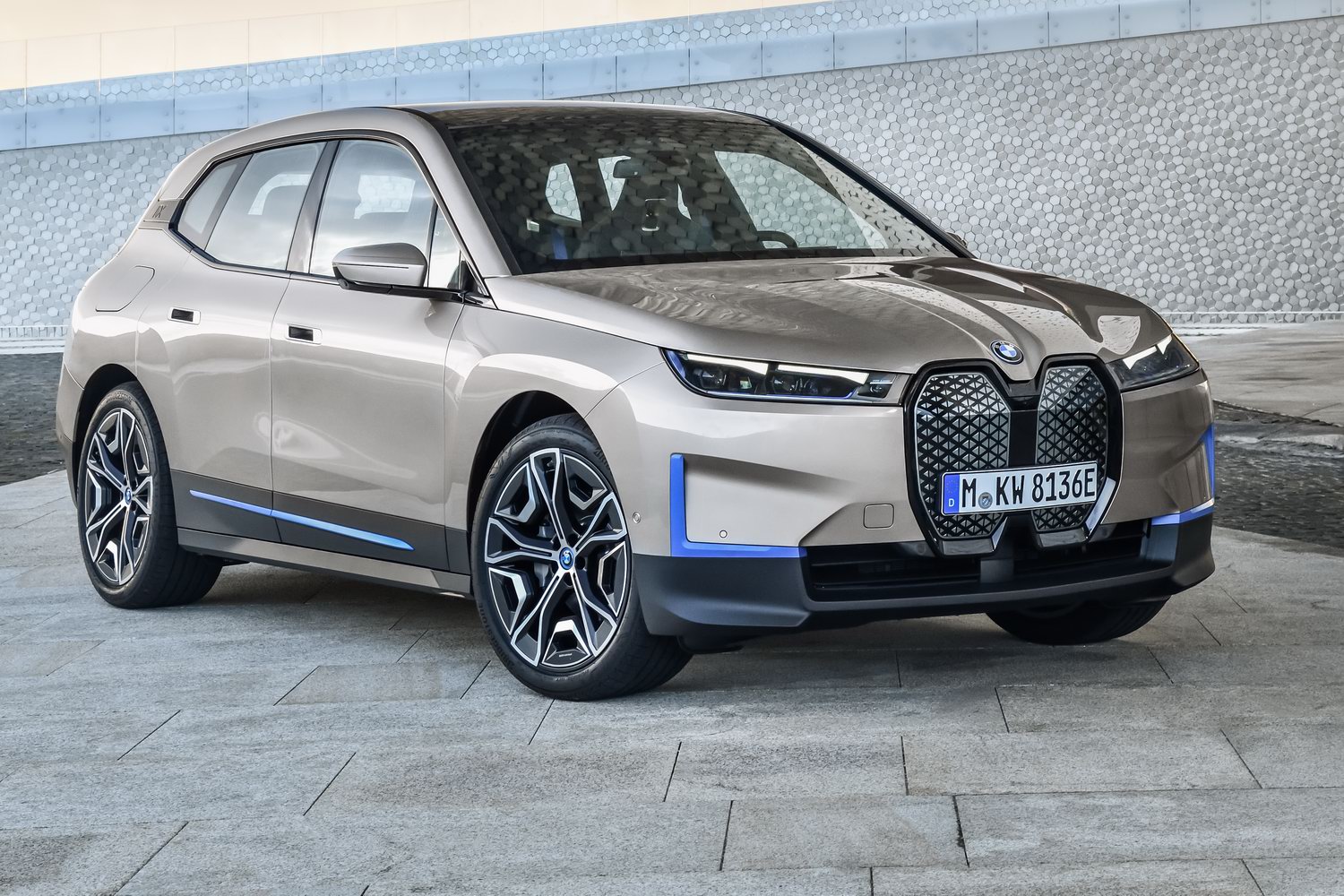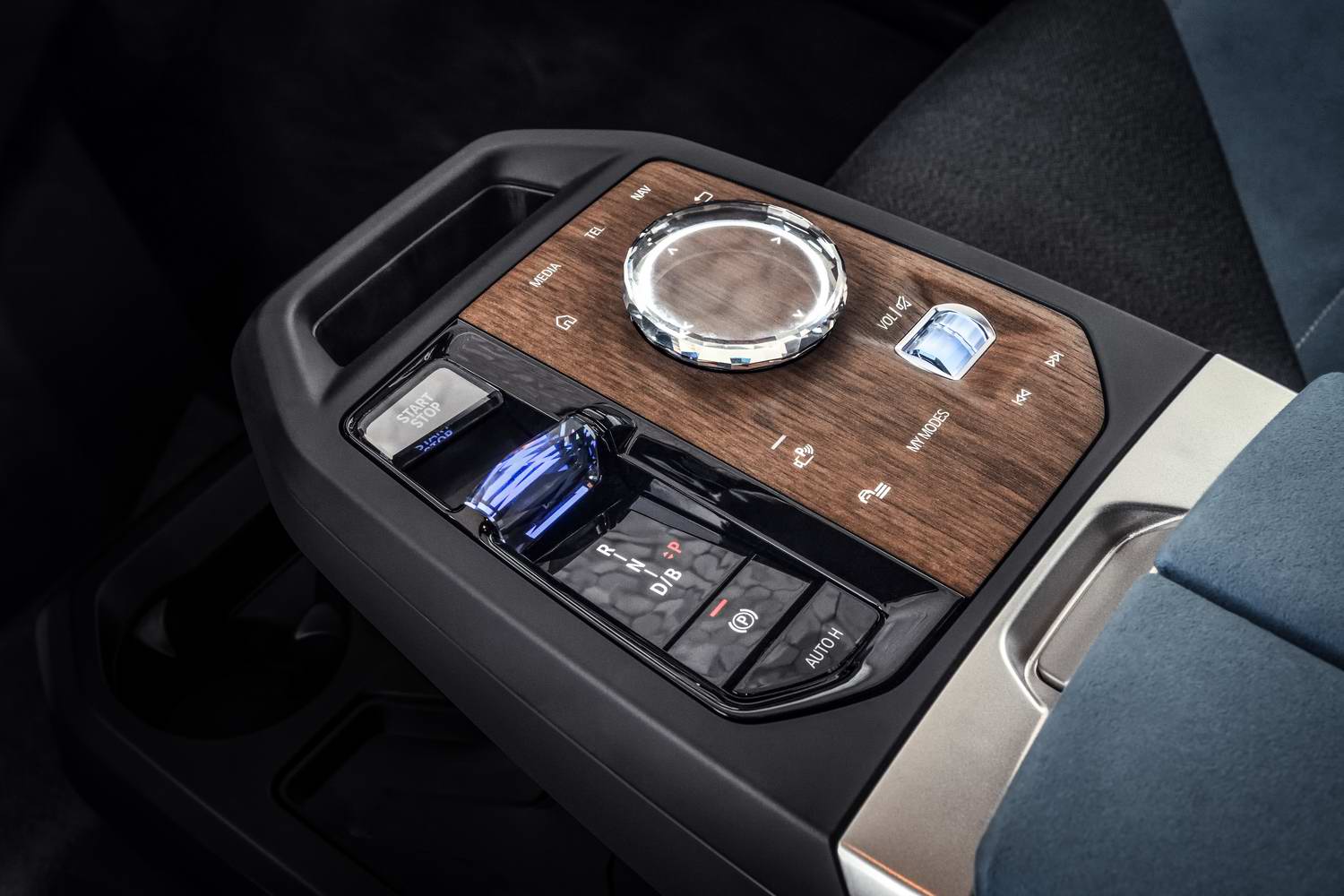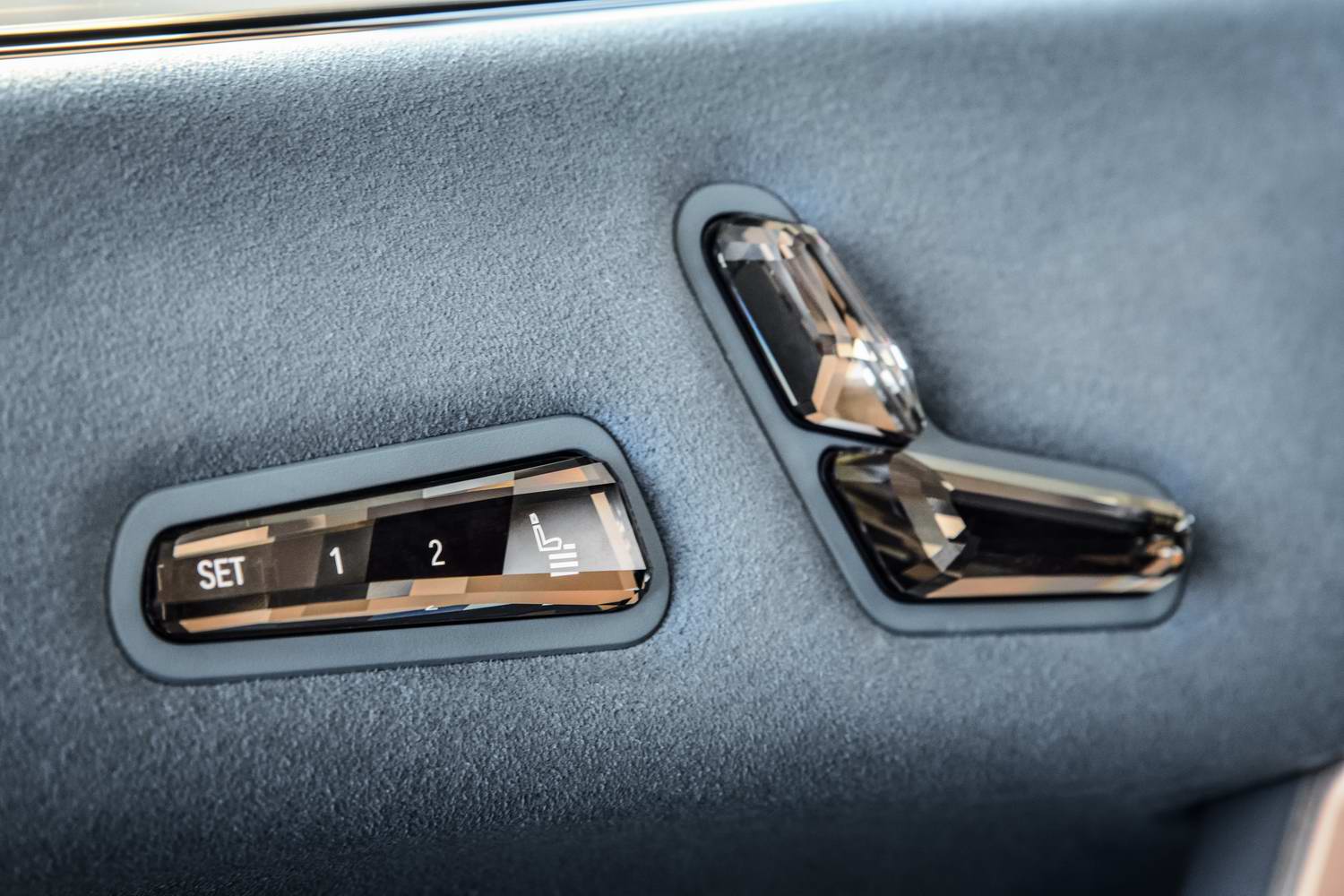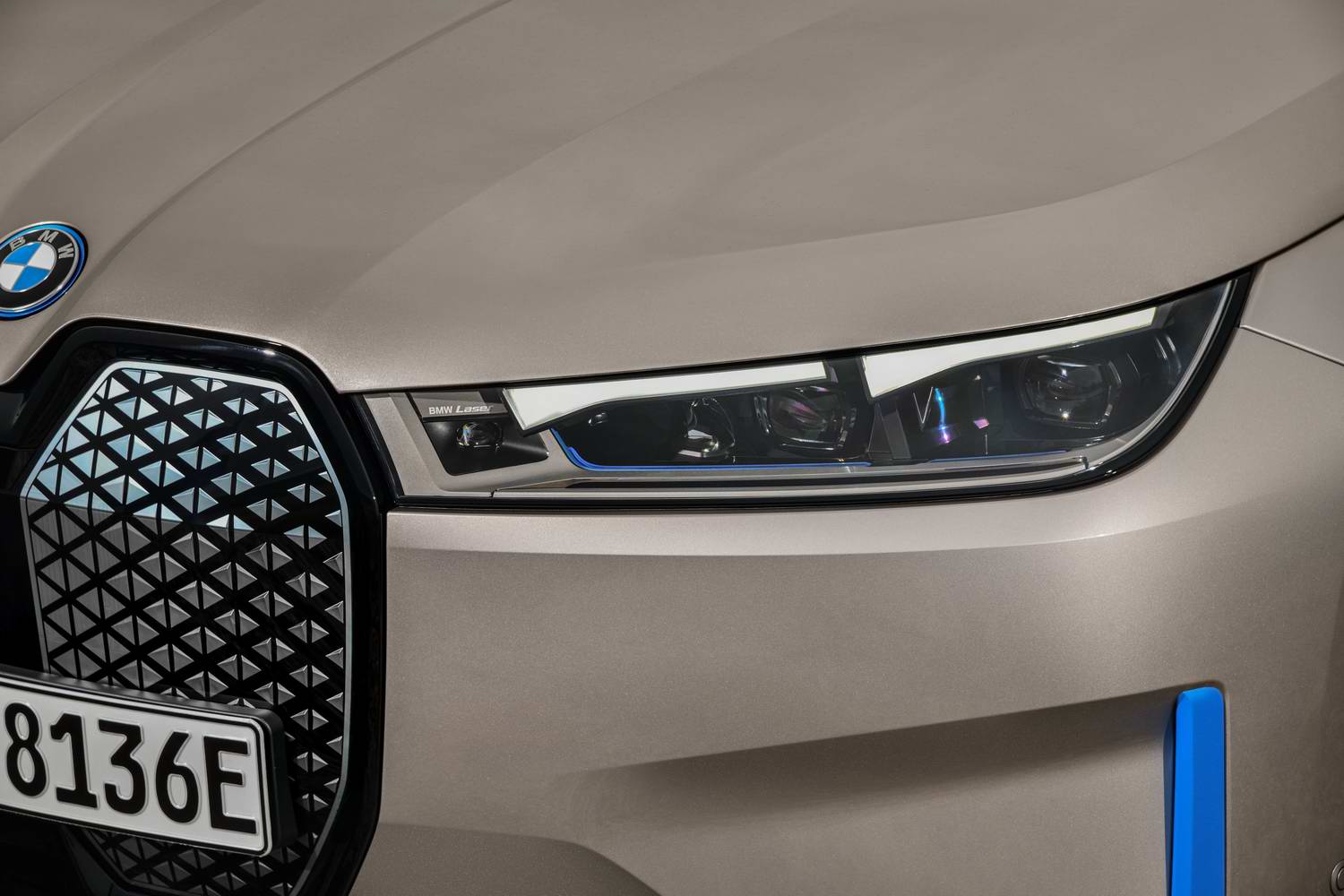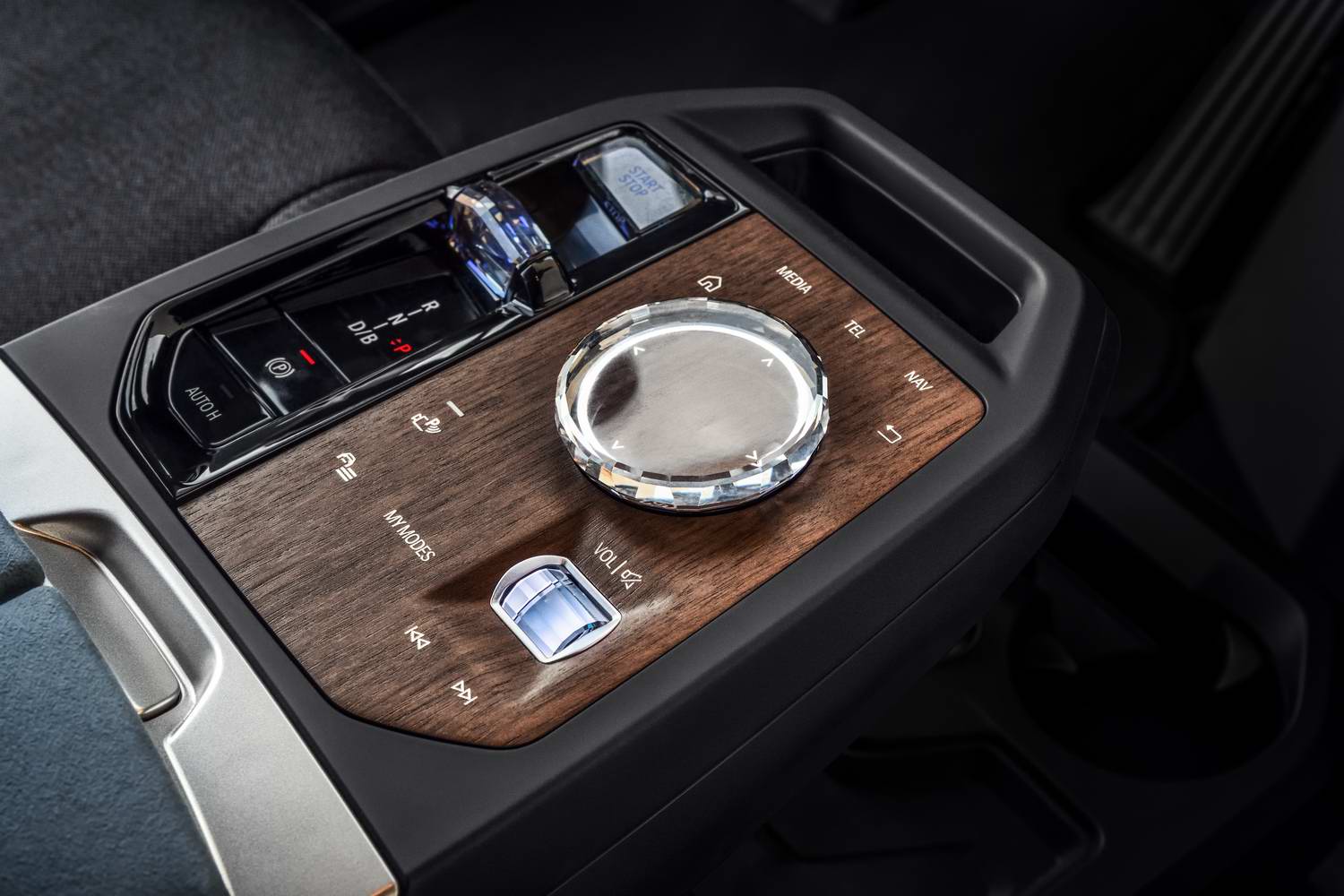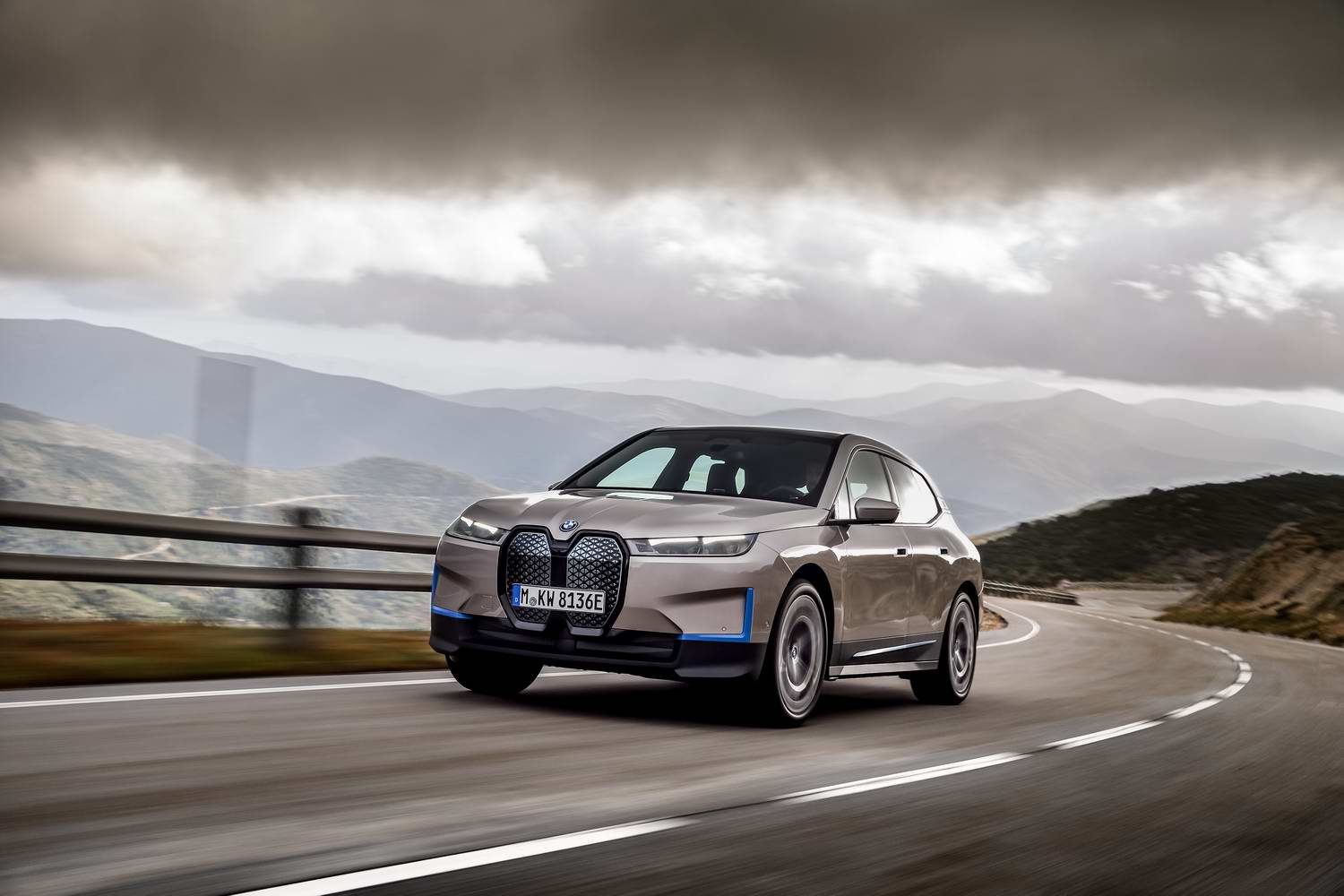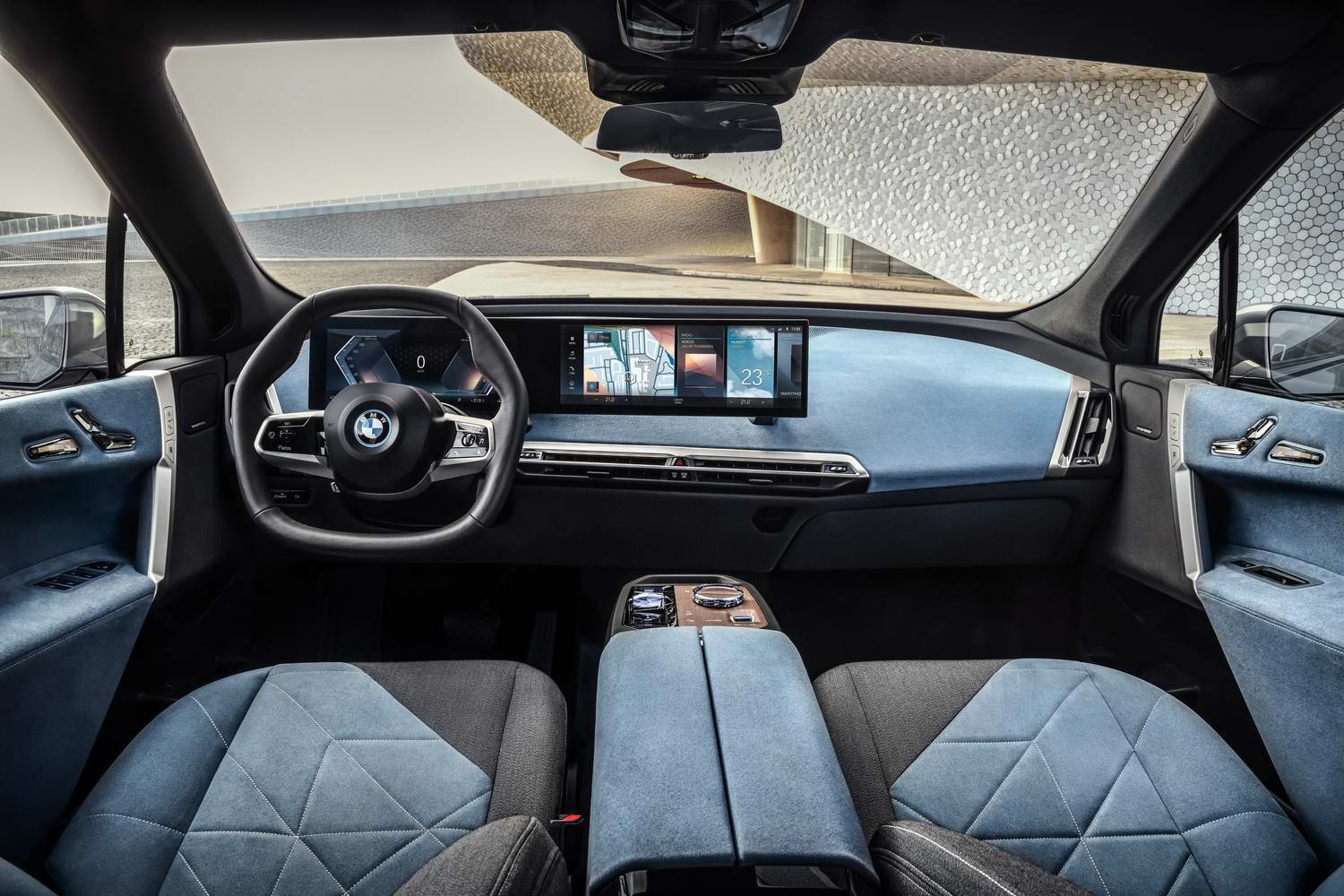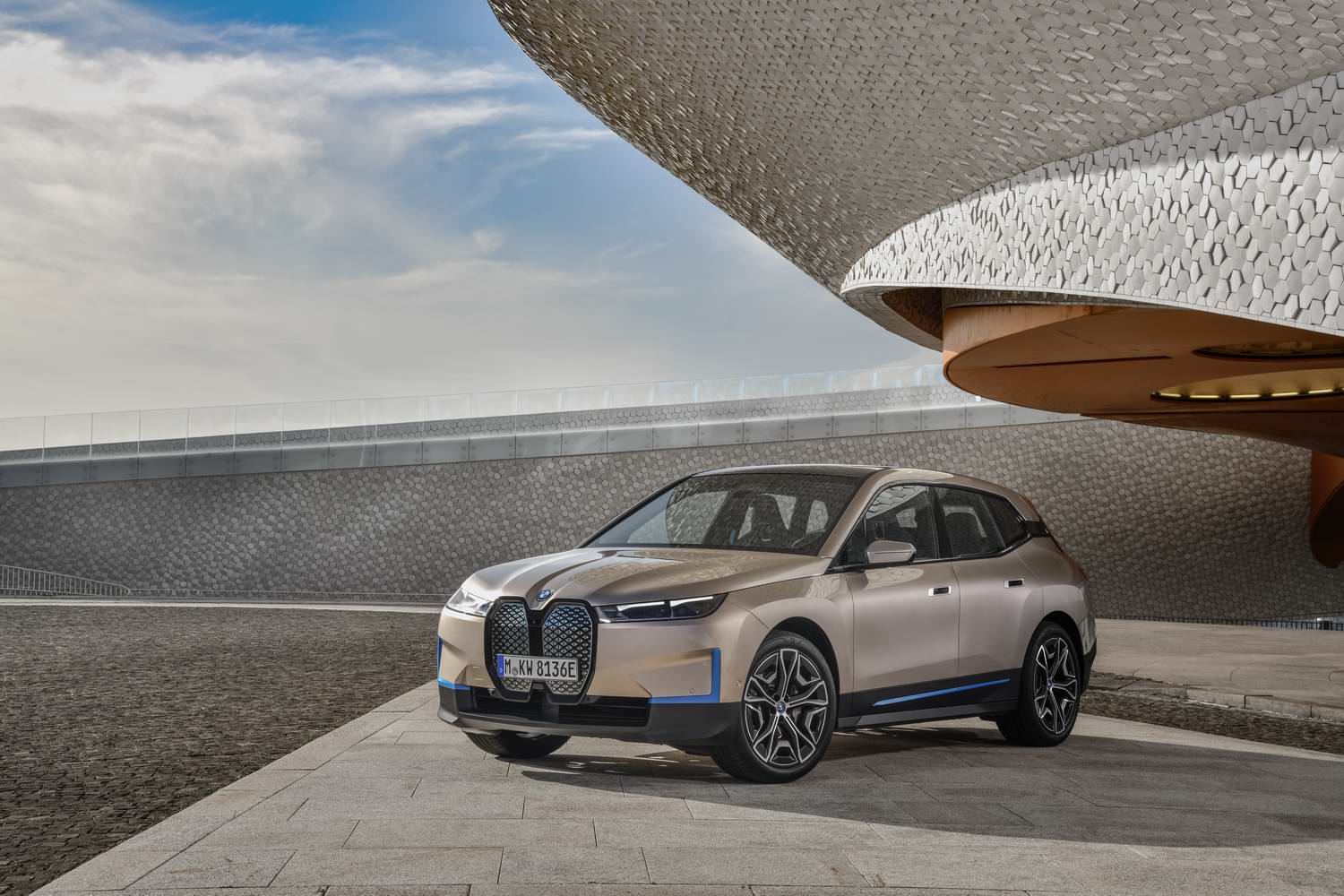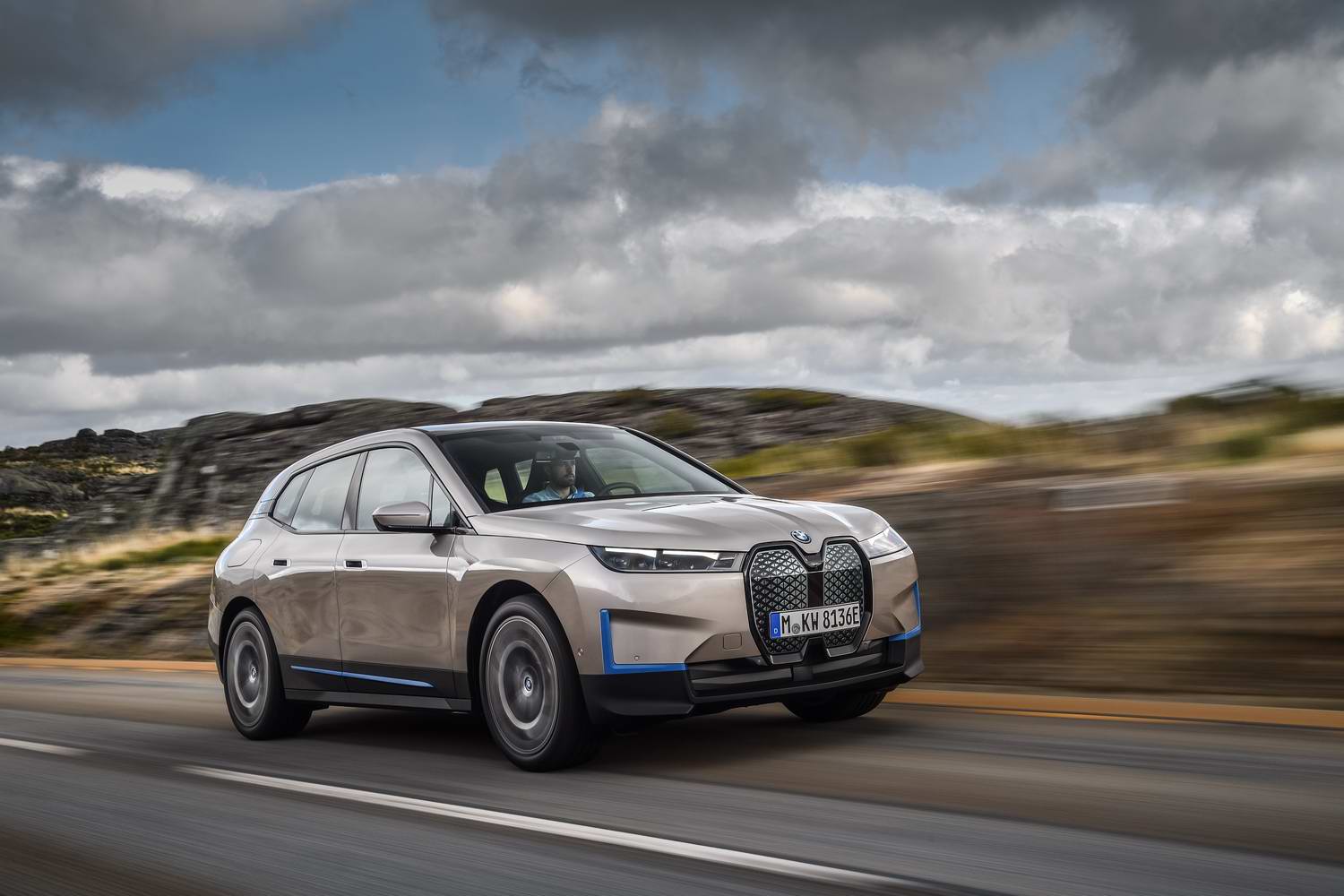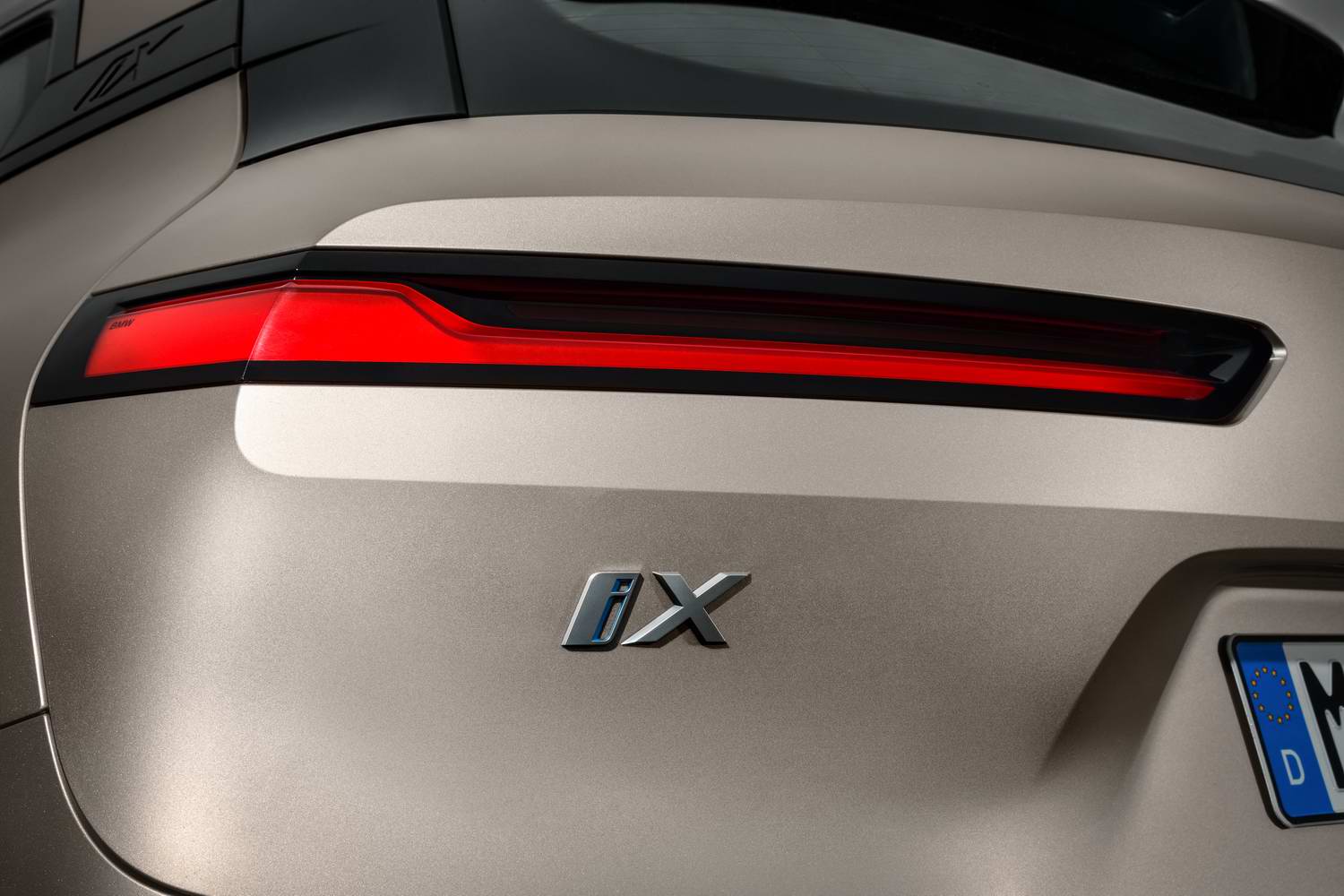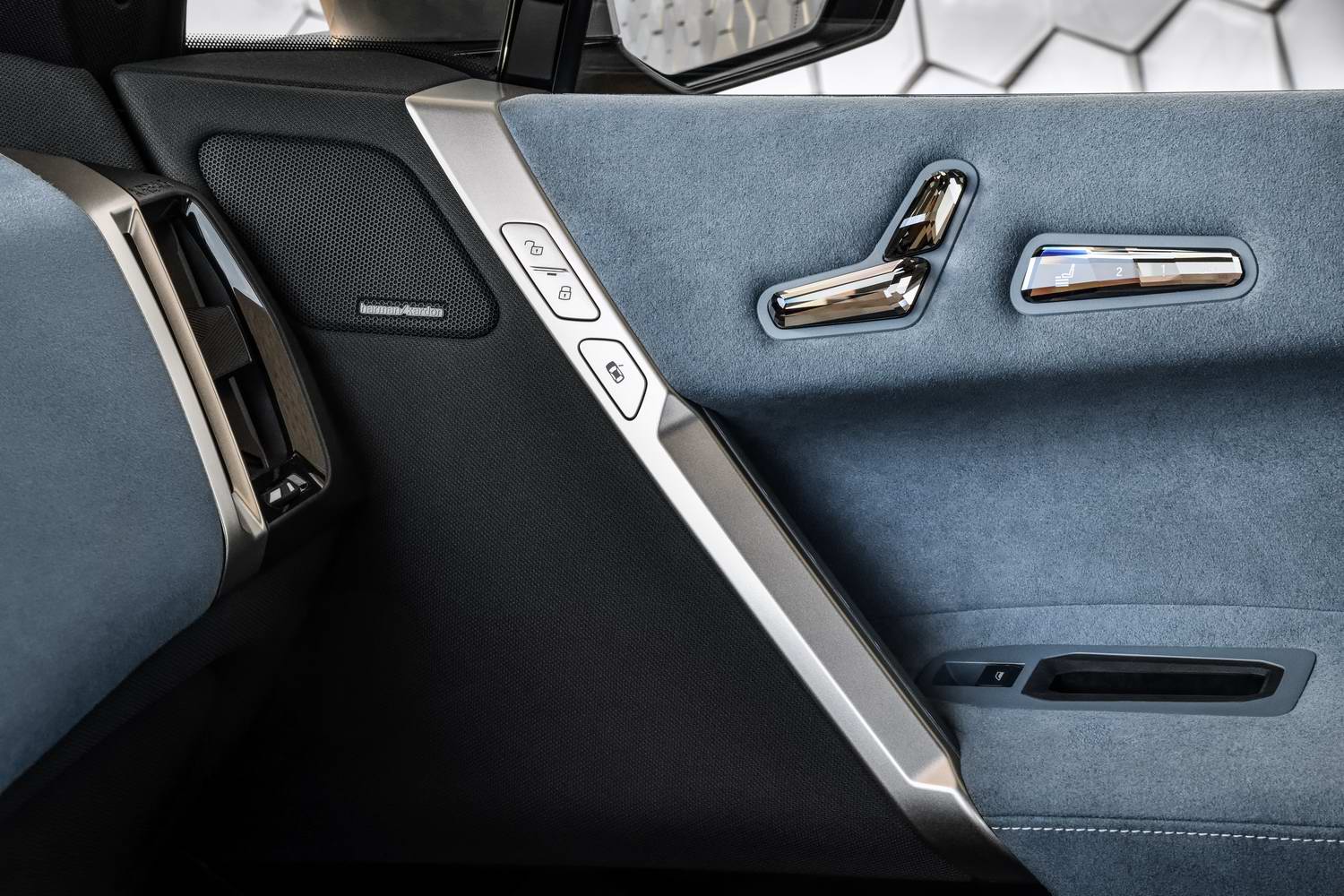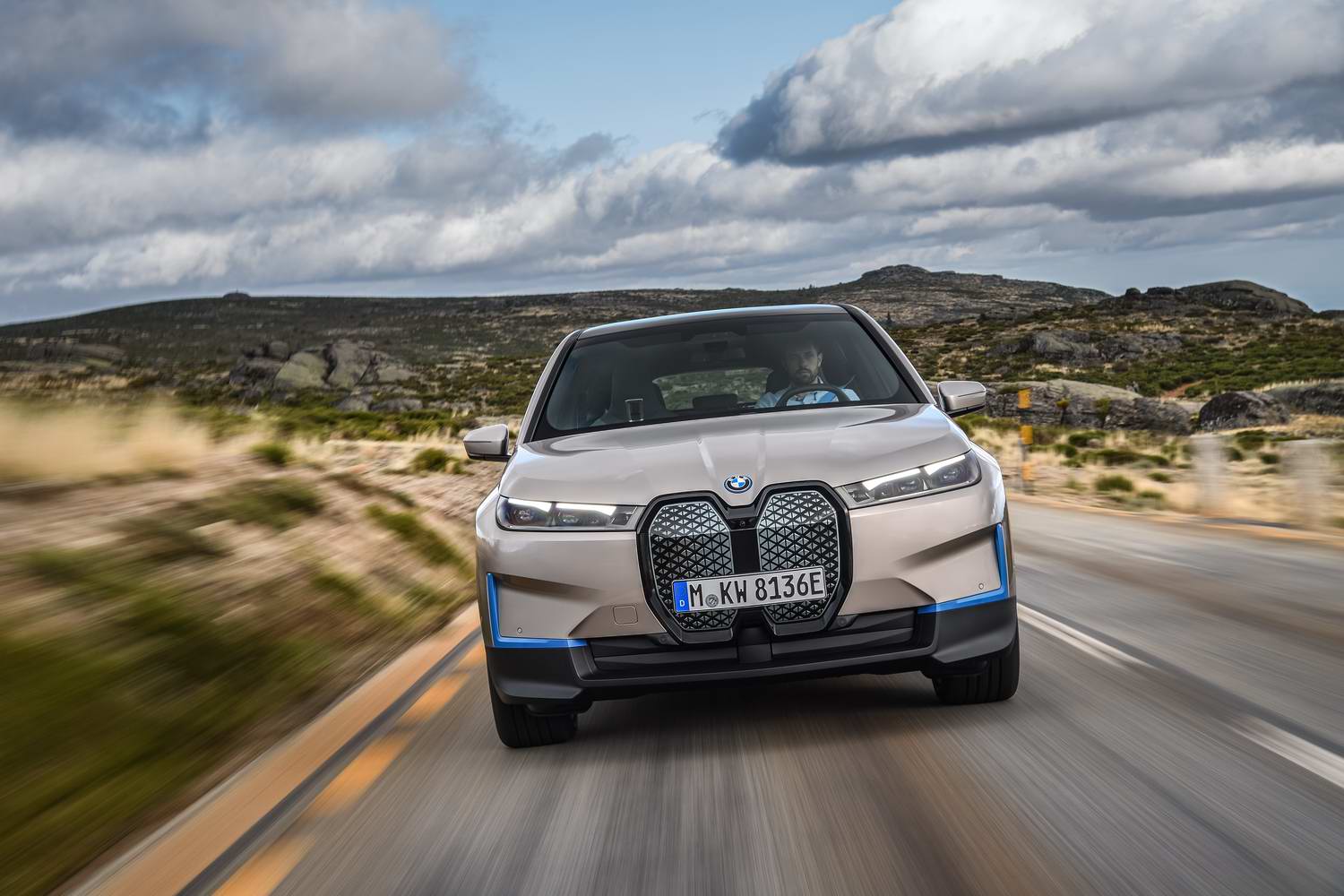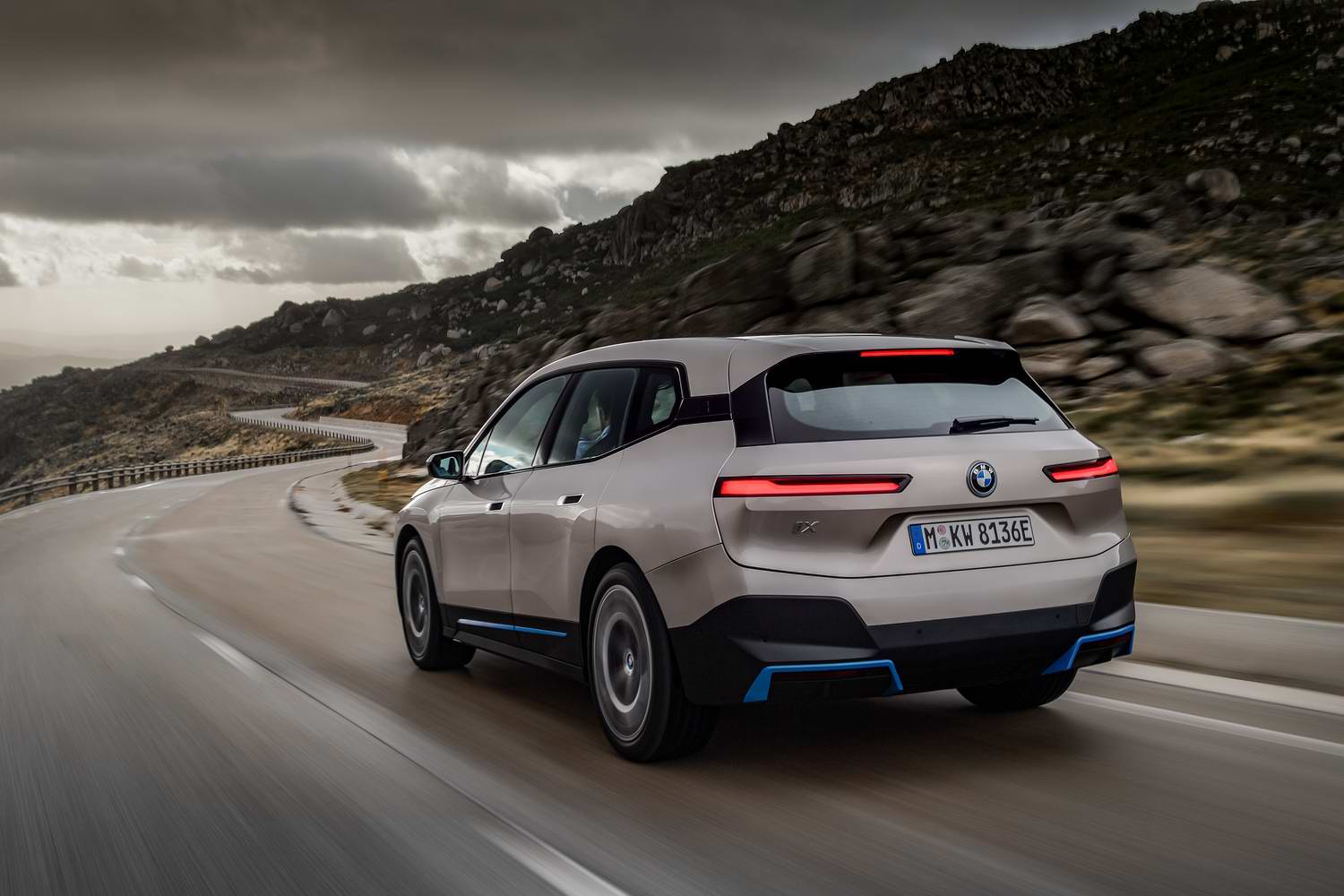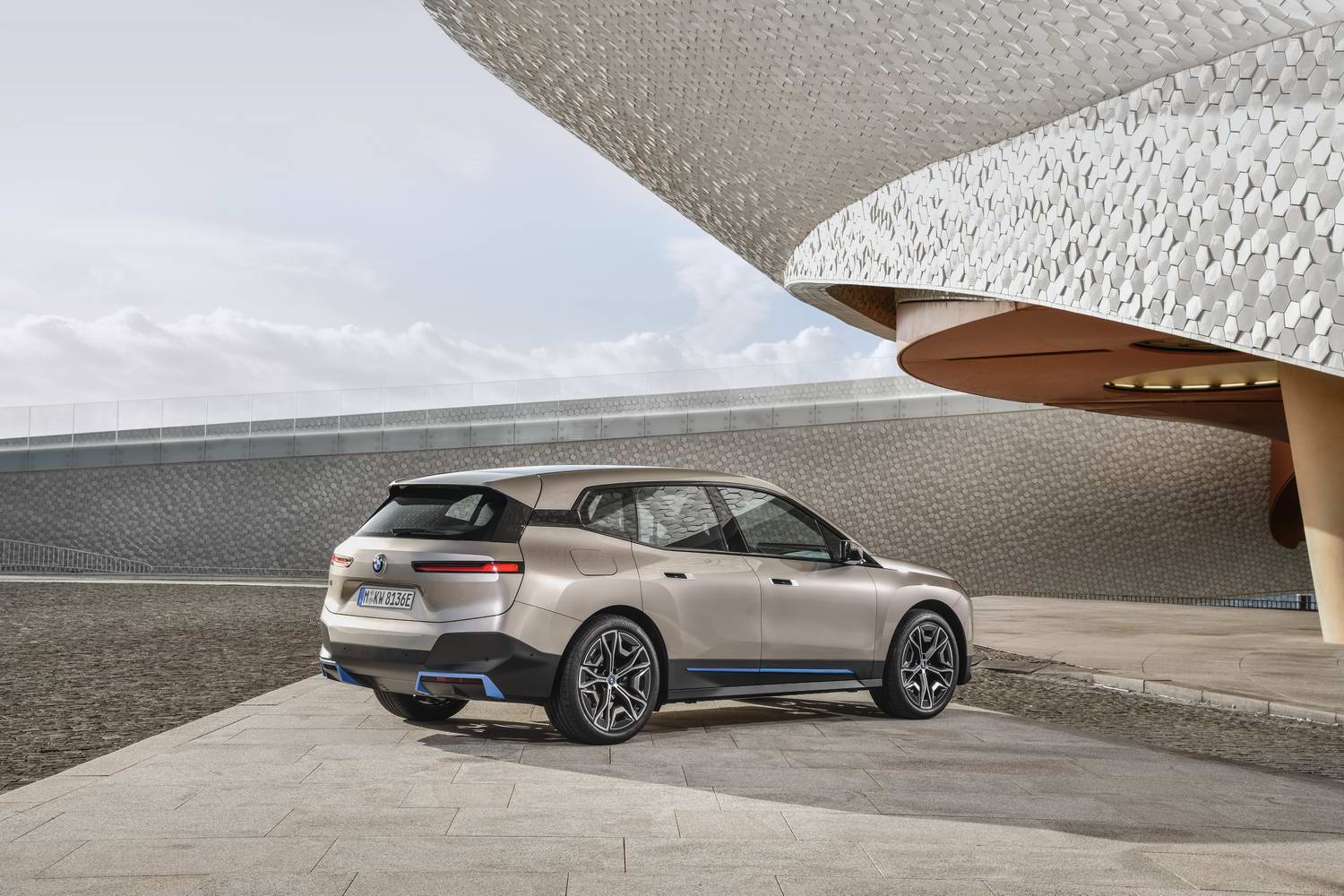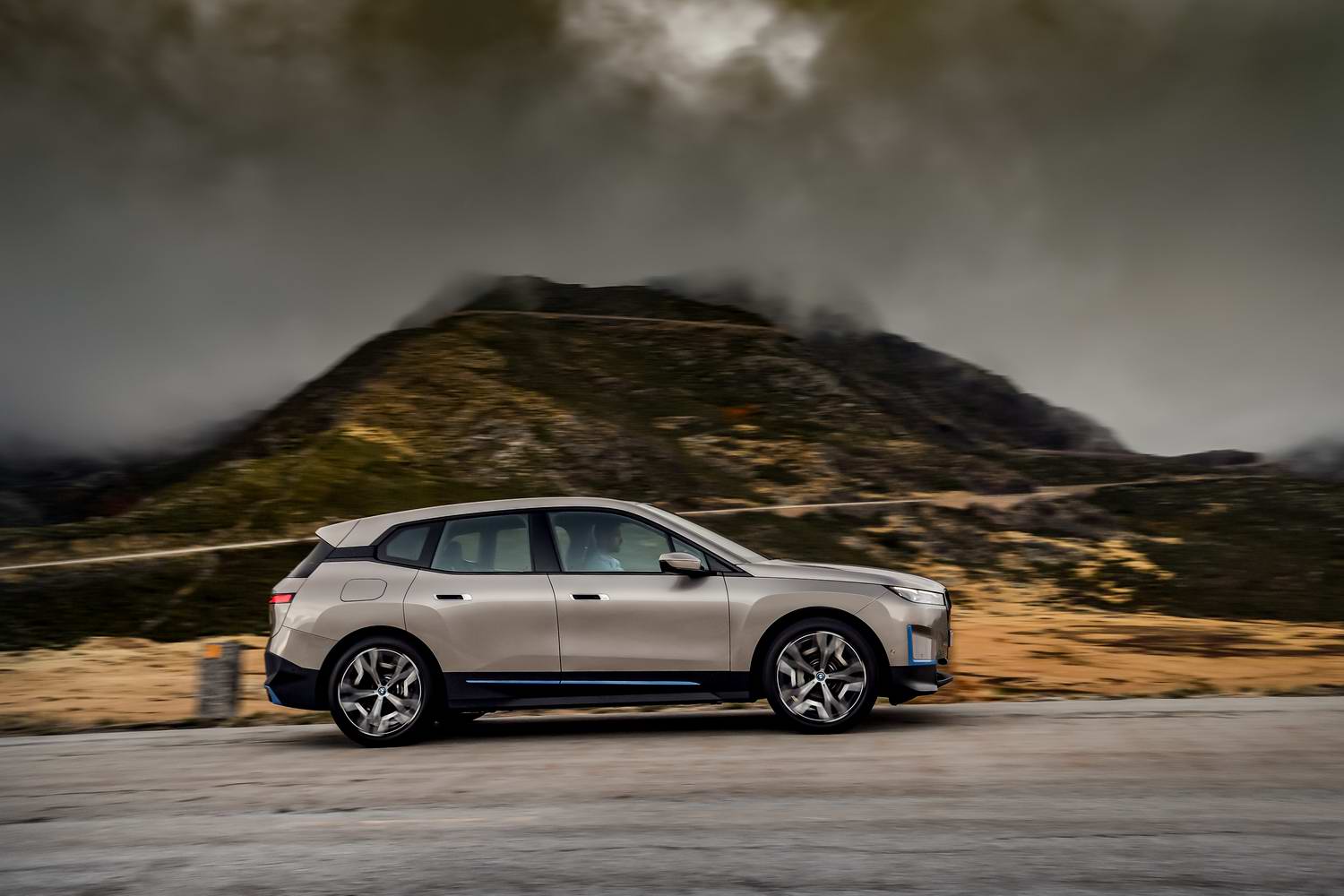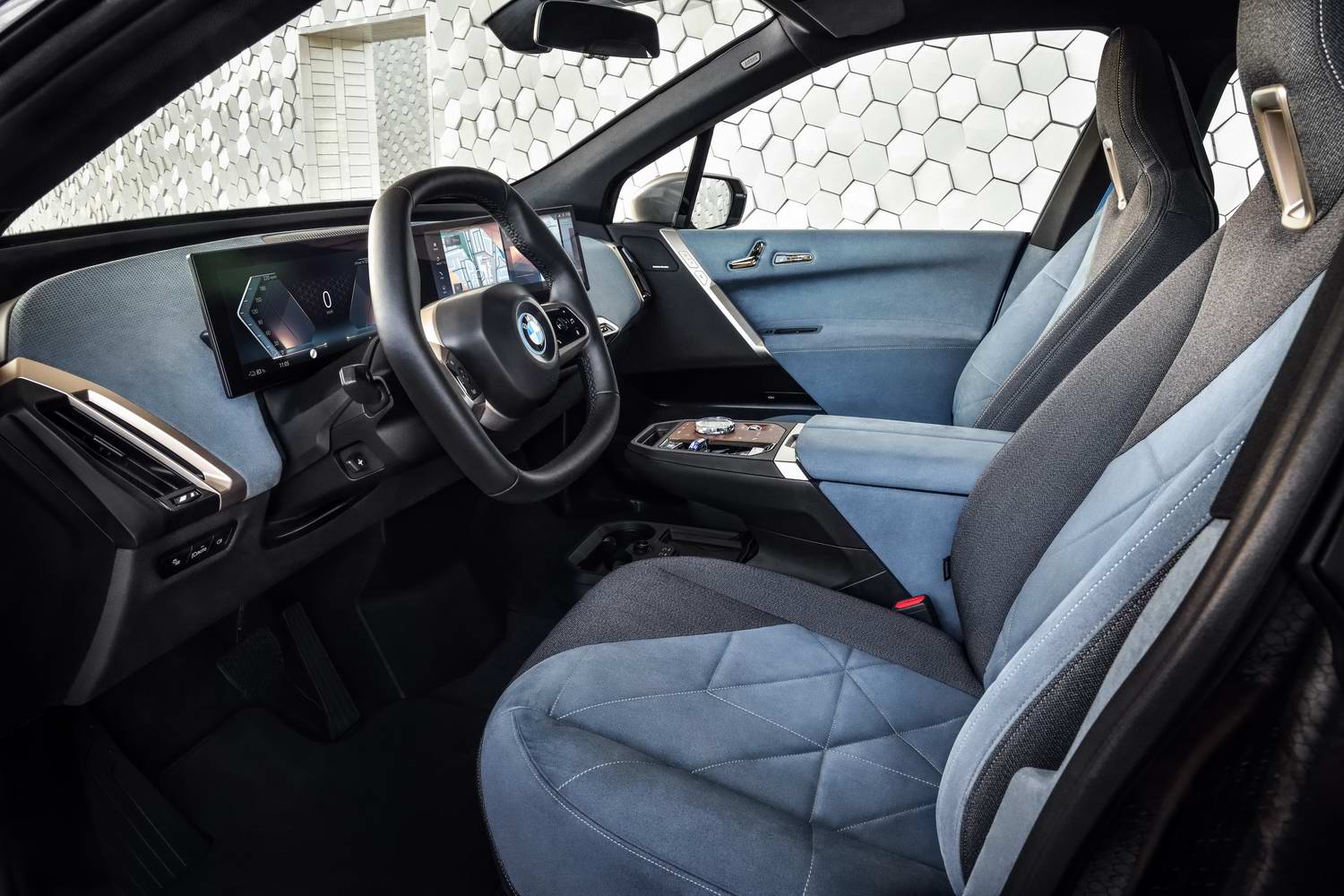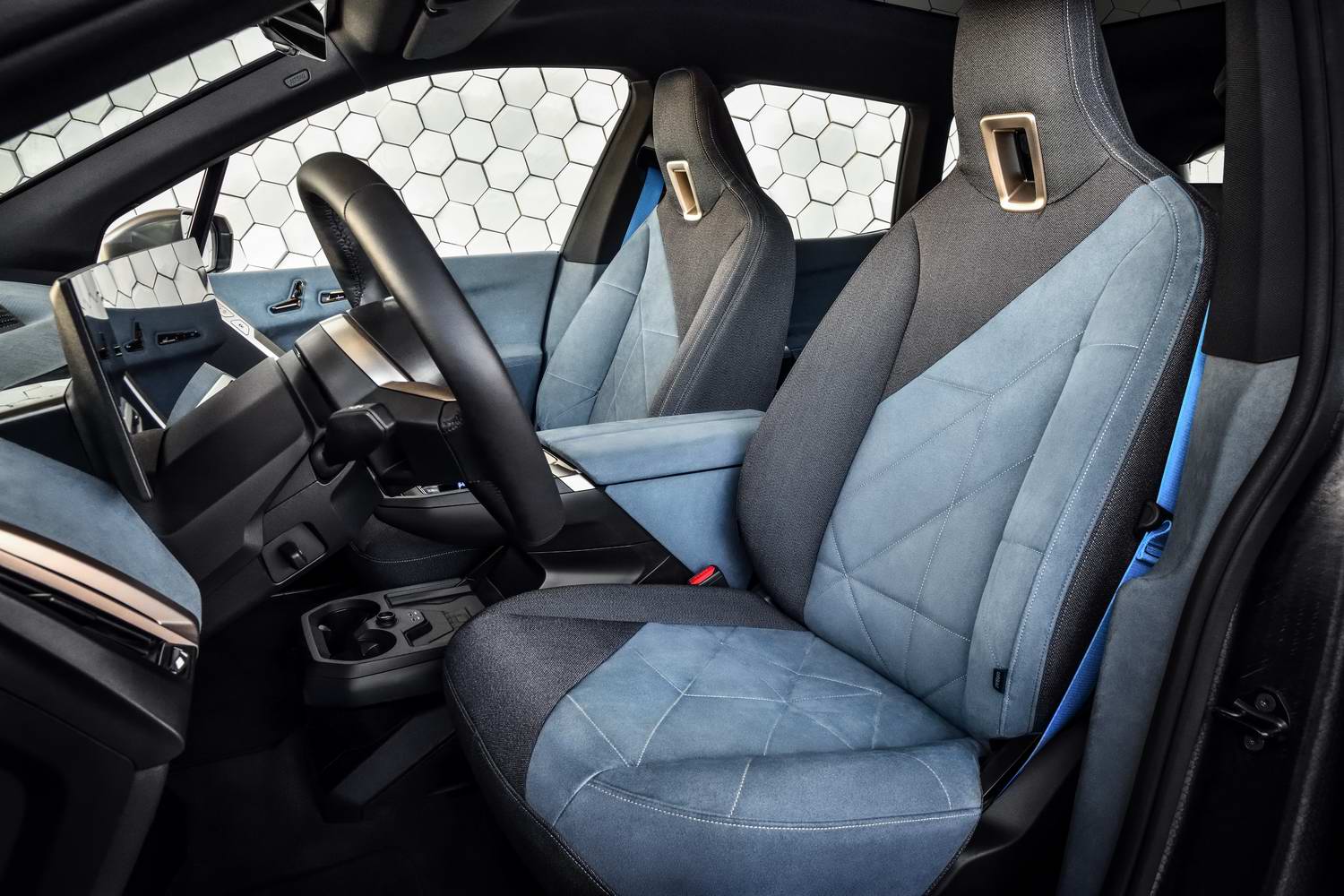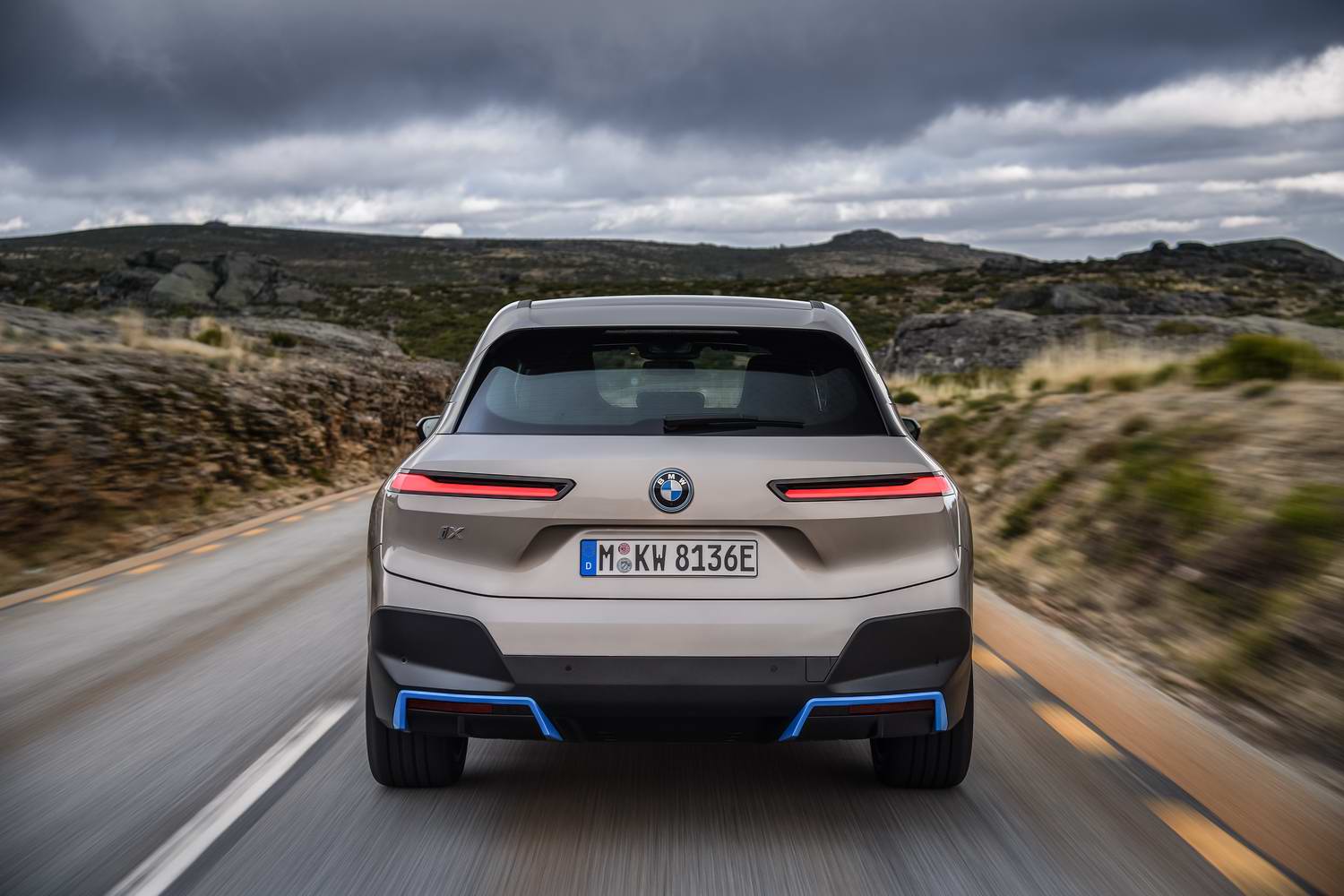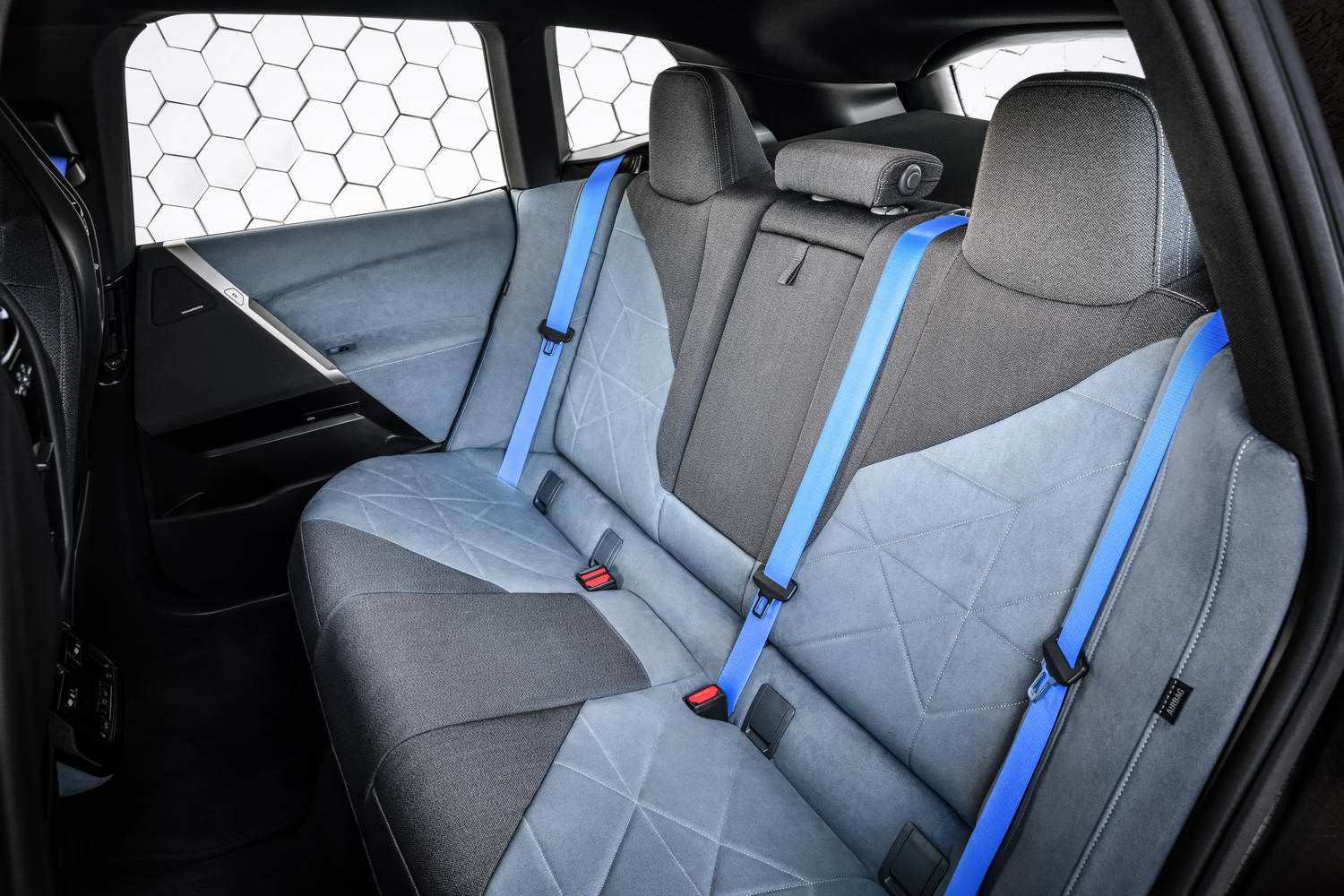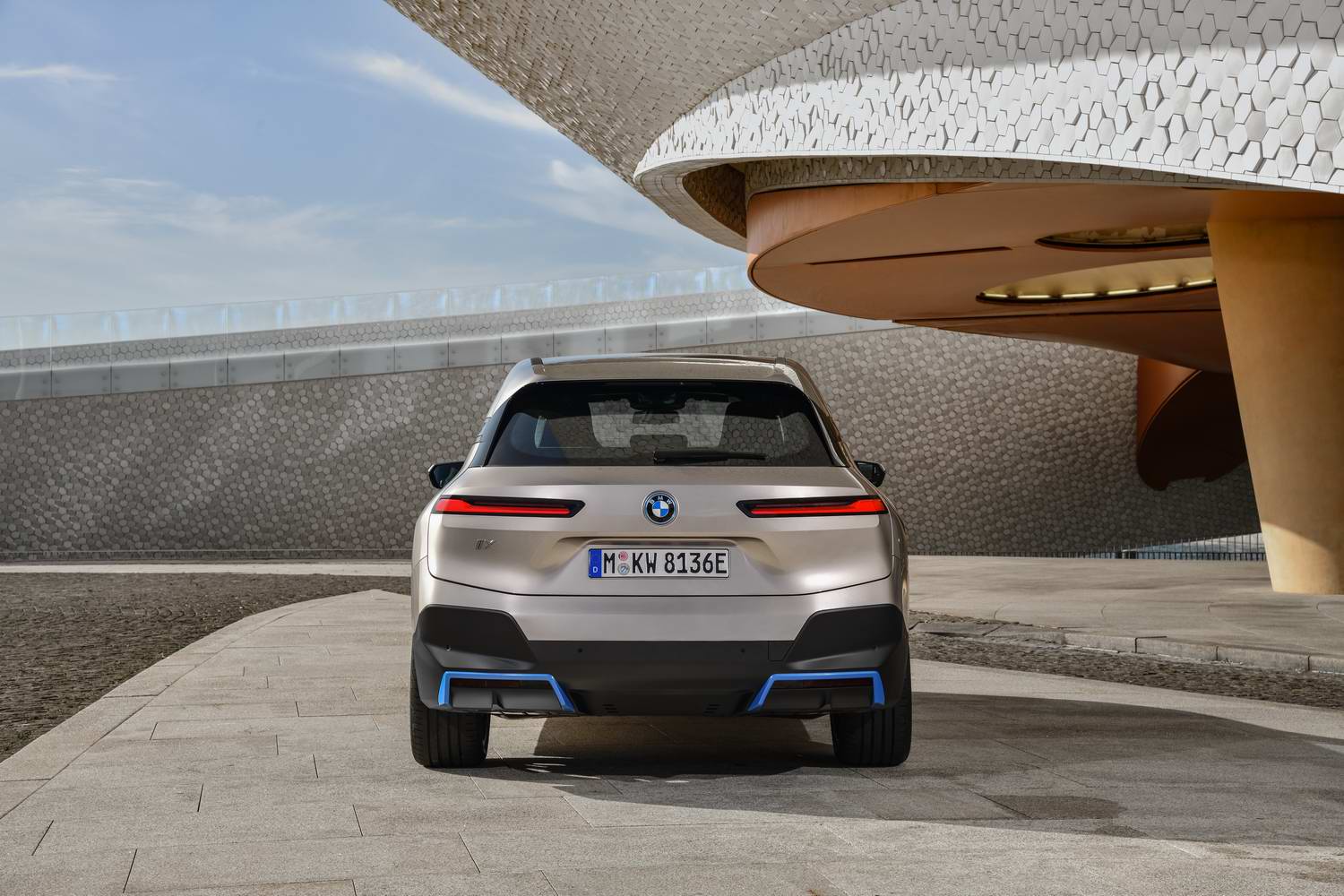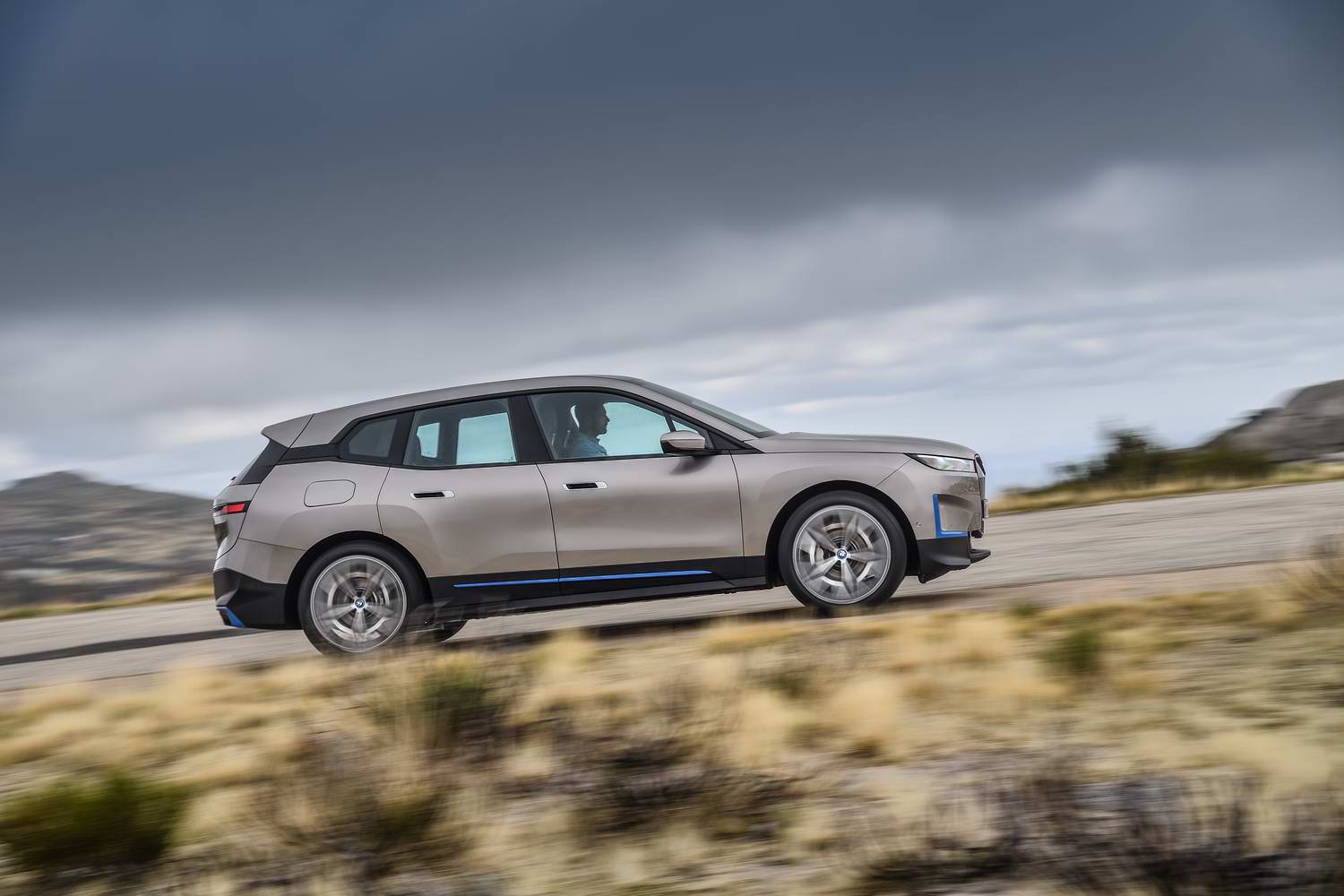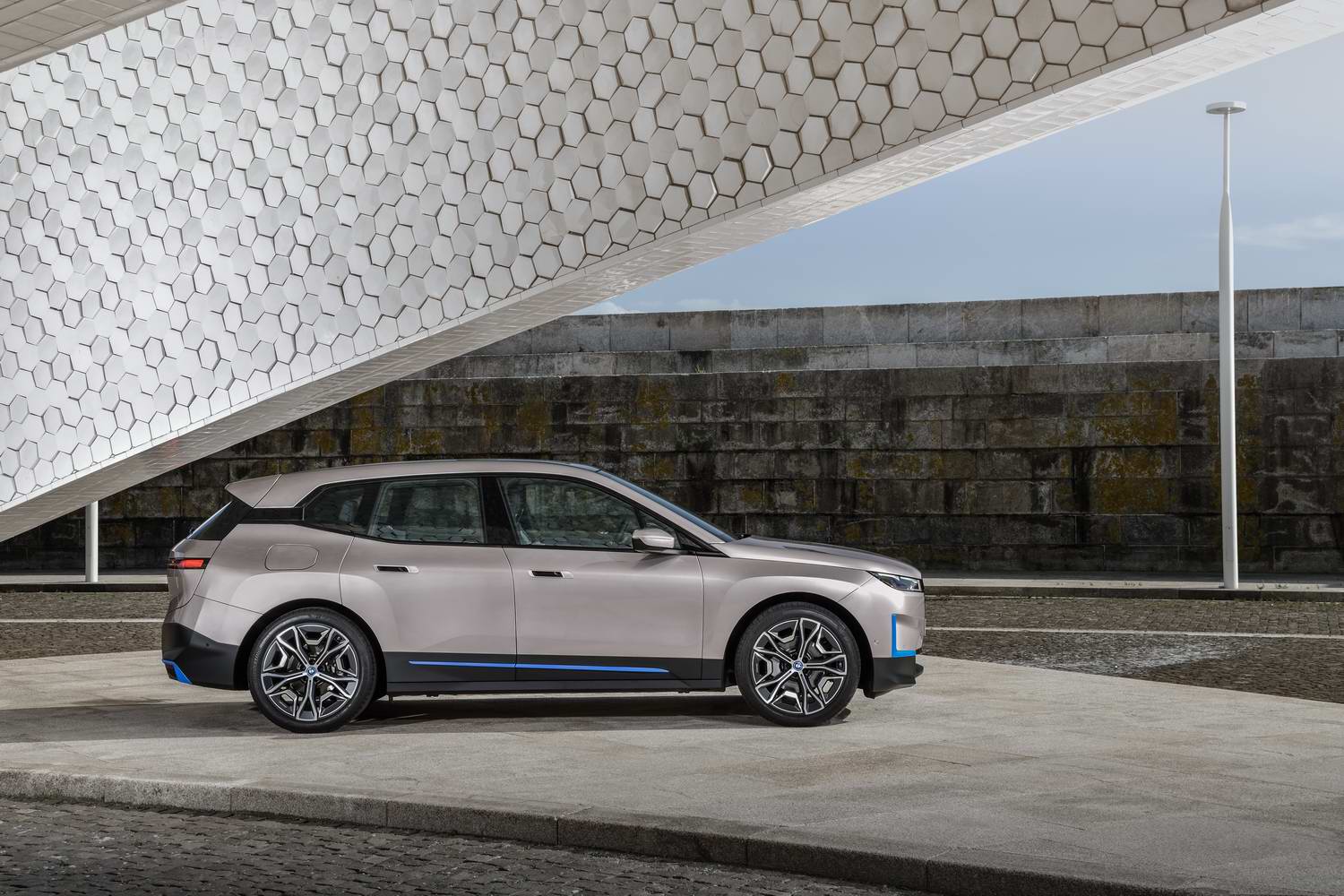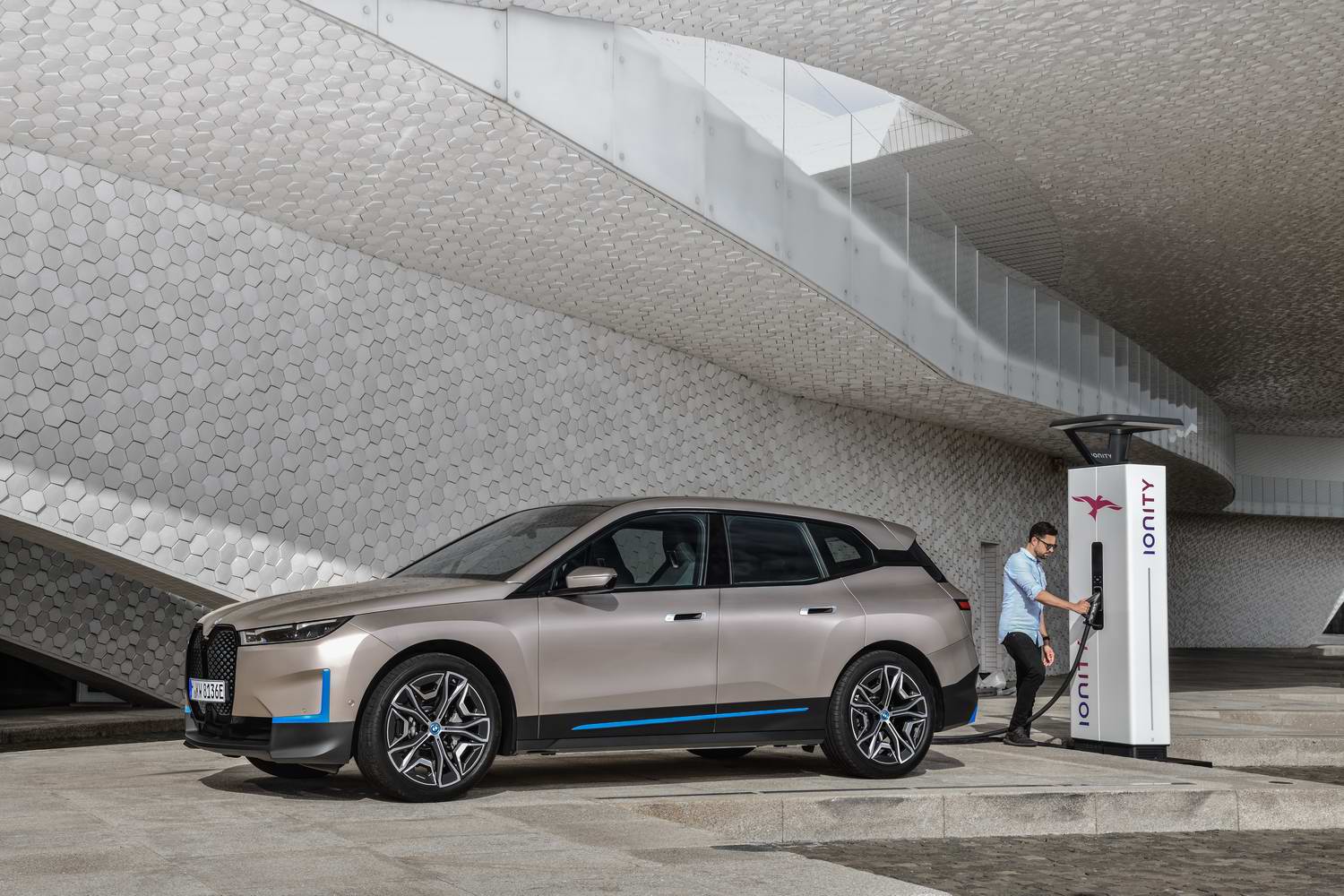Though still nearly a year away from market launch, it's time to see the 2021 BMW iX for the first time. This is the production version of the Vision iNext concept car, an all-electric SUV that is touted as the company's technological flagship. It's tasked with moving the BMW Group forward in that regard, not just in terms of electrification, but also in the fields of sustainability, connectivity, automated driving and design.
The electric bit
BMW hasn't finalised the figures that surround the iX's electric powertrain, but we are told that the big SUV will be powered by two electric motors (with no rare earth elements), producing 'more than' 370kW/500hp. Apparently the iX will do 0-100km/h in under five seconds, but of greater importance is the efficiency and range between charges. BMW is hoping that the iX will average 21kWh per 100km on the WLTP cycle, resulting in a range of over 600km from its 100kWh battery pack.
The iX3 can be fast-charged at up to 200kW, allowing 10-80 per cent charging in under 40 minutes, or 120km range for 10 minutes of charge. On a 11kW Wallbox, the 0-100 per cent charge takes nearly 11 hours.
Big grille here to stay
Given that the BMW iNext concept car had the controversial upright kidney grille, it's no surprise to see it make it through to the iX production car. Obviously, there's no internal combustion engine behind it to cool, so it is blanked off, though BMW has found a use for it, as it houses cameras, radar and sensors for the iX's multitude of driver assistance technologies.
Either side of the grille are a new take on the typical BMW headlight design. Apparently, the all-LED units are the slimmest ever to be used on a BMW production car and they can be upgraded with 'Laserlight' technology. The heavily sculpted bonnet cleanly abuts the grille and headlights, following the contours of the former. That bonnet can only be opened by a mechanic/technician, incidentally, though, cleverly, the BMW badge on it opens to allow topping up of the washer fluid for front and rear windows. The rest of the iX's front is quite blunt in appearance, visually broken up on the car pictured here with blue highlights.
As you move around to the side, the distinctive wheelarch design becomes more apparent. The wheel openings themselves are circular, but the bodywork above that has a square-cut appearance that serves to emphasise the outward curve of the panels front and rear. We suspect it will be more pronounced when the car is seen in real life, as this feature is almost invisible when you view the car from the side. There you can clearly see the influence from the BMW i3, notably so in the treatment of the side glass and the use of black to reduce the visual bulk. The door handles look a little odd, as they're flush with the bodywork, while the door glass itself is frameless front and back.
The iX looks remarkably simple when viewed directly from the back where, again, black is used to break up the expanse of bodywork, as are blue highlights, vaguely alluding to the traditional position of exhaust pipes in the rear diffuser. The opening for the tailgate takes the full width of the car, which means wonderfully simple, one-piece LED lights and a clean overall appearance - at the expense of a visible shut line at the side. The smooth bodywork combines with active aerodynamics measures that are hidden from view to give the iX an astounding drag coefficient of just 0.25. BMW reckons its efforts in this field have added over 65km of range to the car.
Though Irish specifications for the iX have yet to be confirmed, we know that the minimum wheel size is a 20-inch alloy design. Pictured here are 22-inch BMW Individual wheels, which we assume are one of the two 22-inch designs available as 'Air Performance Wheels'. These include extra aerodynamic inserts to smooth the airflow over them, and BMW claims they alone can increase the car's range between charges by some 15km.
BMW has not released the mass of the iX, but it has confirmed that the SUV's structure is part aluminium spaceframe, with a new 'Carbon Cage' that selectively uses CFRP (Carbon Fibre Reinforced Plastic) and Continuous Fibre Reinforced Thermoplastics (CFRTP) in a bid to keep the weight down while enhancing the rigidity of the platform. In terms of size, the iX sits on a 3,000mm wheelbase, which is a fraction longer than the current BMW X5's, while its height is said to be along the same lines as the BMW X6.
Though not pictured here, BMW will offer the iX with a more aggressive-looking Sport package. View the BMW iX Sport image gallery here.
Hexagonal steering wheel?!
For years we've extolled the virtues of BMW's adamance when it comes to the shape of the steering wheel. While its rivals have fitted various flattened shapes, BMW has stuck with purely circular designs, even in its sportiest models. Until now. The iX3 marks the introduction of the 'hexagonal' steering wheel. BMW gives various reasons for this, though we're not convinced.
It should at least make it easier to see the swanky new freestanding 'Curved Display'. This combines a 12.3-inch screen in front of the driver with a 14.9-inch touchscreen behind one seamless glass surface. BMW says that it's hugely customisable and features the next generation of graphics and menu system. That's complemented by a redesigned rotary controller and associated switchgear on the centre console. A new control surface with haptic feedback replaces conventional buttons for some features, while the drive selector is now a compact rocker switch. There appears to be a huge amount of storage space behind that, with cupholders, USB ports and wireless charging on a lower level.
Pictured here is the 'Loft' trim, which includes distinctively patterned upholstery on the new seats, featuring integrated headrests. The covering is a mix of textile and microfibre fabrics and it extends to the distinctively styled door cards. There you'll see buttons to electrically open the doors, incidentally, along with controls to adjust the seating position. Other upholstery materials will be offered, including Sensatec and leather, while the seats themselves can be fitted with speakers. BMW also mentions the use of FSC-certified wood and recycled plastics.
BMW hasn't confirmed the size of the iX's boot, but we do know that it's a strict five-seat SUV, and that the rear seat splits and folds 40:20:40. It appears that the floor of the rear passenger compartment is completely flat and that there are ISOFIX mountings on the outer two back positions for child safety seats.
More to come
Irish pricing for the BMW iX has yet to be released ahead of its market introduction in 'late 2021'. Before that, the rear-drive BMW iX3 will be launched here, and we will have full details on the new BMW i4, an all-electric vehicle in the vein of the 4 Series Gran Coupe.

